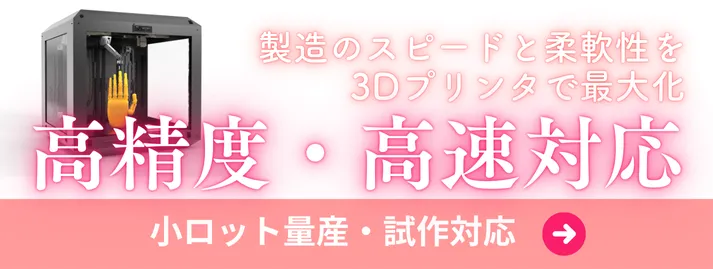- お役立ち記事
- The difference between Inventory Turnover Rate and Inventory Days
月間76,176名の
製造業ご担当者様が閲覧しています*
*2025年3月31日現在のGoogle Analyticsのデータより

The difference between Inventory Turnover Rate and Inventory Days

Understanding inventory metrics is crucial for any business that deals with physical products.
Among the key metrics are Inventory Turnover Rate (ITR) and Inventory Days.
Though they both deal with inventory management, they represent different perspectives of it.
Here, we’ll break down the differences and significance of these two metrics.
目次
What is Inventory Turnover Rate?
Inventory Turnover Rate, abbreviated as ITR, evaluates how efficiently a company can sell and replenish its inventory within a given period.
This metric is calculated by dividing the cost of goods sold (COGS) by the average inventory during the same period.
A higher ITR indicates that a company sells its inventory quickly, implying effective inventory management and strong sales.
For instance, if a company has a COGS of $500,000 and an average inventory of $100,000, the ITR would be 5.
This means the company sells and replaces its inventory 5 times a year.
Importance of Inventory Turnover Rate
Understanding ITR helps businesses in several ways:
– It aids in gauging the demand for products.
– It provides insights into sales effectiveness.
– It helps in identifying slow-moving or obsolete stock.
A high ITR suggests that products are selling well, whereas a low ITR may indicate overstocking or poor sales.
What are Inventory Days?
Inventory Days, also known as Days Sales of Inventory (DSI), estimate the average number of days a company holds inventory before selling it.
This metric is calculated by dividing the number of days in the period (usually 365 days for a year) by the ITR.
For our earlier example with an ITR of 5, Inventory Days (365 ÷ 5) equals 73 days.
Importance of Inventory Days
Inventory Days give companies a real-world understanding of their inventory management:
– It shows the average time products spend in storage.
– Shorter Inventory Days mean faster conversion of inventory to sales.
– Longer Inventory Days may signal inefficiency in managing stock.
A lower Inventory Days value suggests efficient management and quick sales cycles, while a higher value may indicate issues in the inventory management process.
Key Differences Between Inventory Turnover Rate and Inventory Days
While both metrics measure inventory efficiency, they do so from different angles:
Interpretation
ITR focuses on how many times the inventory is sold and replenished over a period.
In contrast, Inventory Days concentrates on the average time taken to sell the inventory.
Both metrics are interconnected but provide different insights that together form a comprehensive picture of inventory management.
Calculation
ITR is calculated with the formula: COGS ÷ Average Inventory.
Inventory Days, on the contrary, uses the formula: 365 ÷ ITR.
So while ITR uses sales and inventory data directly, Inventory Days translates this into a more tangible timeframe.
Business Implications
A high ITR may indicate strong sales and efficient inventory management but requires careful balance to avoid stock shortages.
High Inventory Days might suggest issues in inventory management, necessitating measures to expedite sales and reduce holding time.
Why Both Metrics Matter Together
Both ITR and Inventory Days are complementary.
Used together, they offer a nuanced perspective on inventory health.
A high ITR along with low Inventory Days indicates a well-oiled inventory management system.
Conversely, discrepancies between the two can highlight areas needing improvement.
Optimizing Inventory Management
To optimize inventory management:
– Regularly monitor both metrics.
– Identify patterns or anomalies.
– Adjust strategies to maintain an optimal balance between stock levels and sales rates.
Employing software tools can automate data collection and analysis, providing actionable insights quickly.
Balance is key; sufficient stock levels must meet demand without leading to excess.
Industry Differences
Inventory metrics may vary by industry.
For example, industries with perishable goods like groceries have higher ITR and lower Inventory Days.
Conversely, luxury goods might exhibit a lower ITR and higher Inventory Days due to longer selling cycles.
Conclusion
Understanding the difference between Inventory Turnover Rate and Inventory Days is crucial for effective inventory management.
Both metrics, while interrelated, offer distinct perspectives that are invaluable for making informed business decisions.
Regular monitoring and adjustment based on these metrics can significantly enhance inventory efficiency, ultimately boosting profitability.
 資料ダウンロード
資料ダウンロード
QCD管理受発注クラウド「newji」は、受発注部門で必要なQCD管理全てを備えた、現場特化型兼クラウド型の今世紀最高の受発注管理システムとなります。
 ユーザー登録
ユーザー登録
受発注業務の効率化だけでなく、システムを導入することで、コスト削減や製品・資材のステータス可視化のほか、属人化していた受発注情報の共有化による内部不正防止や統制にも役立ちます。
 NEWJI DX
NEWJI DX
製造業に特化したデジタルトランスフォーメーション(DX)の実現を目指す請負開発型のコンサルティングサービスです。AI、iPaaS、および先端の技術を駆使して、製造プロセスの効率化、業務効率化、チームワーク強化、コスト削減、品質向上を実現します。このサービスは、製造業の課題を深く理解し、それに対する最適なデジタルソリューションを提供することで、企業が持続的な成長とイノベーションを達成できるようサポートします。
 製造業ニュース解説
製造業ニュース解説
製造業、主に購買・調達部門にお勤めの方々に向けた情報を配信しております。
新任の方やベテランの方、管理職を対象とした幅広いコンテンツをご用意しております。
 お問い合わせ
お問い合わせ
コストダウンが利益に直結する術だと理解していても、なかなか前に進めることができない状況。そんな時は、newjiのコストダウン自動化機能で大きく利益貢献しよう!
(β版非公開)









